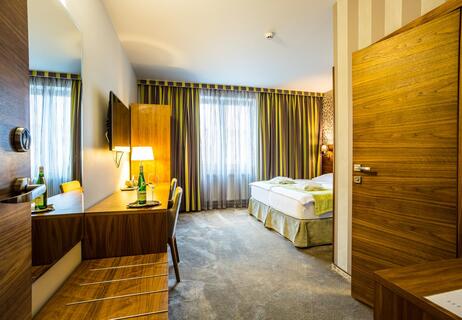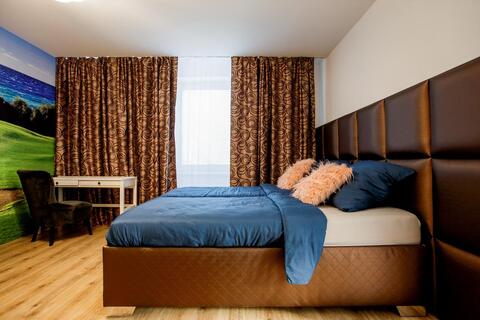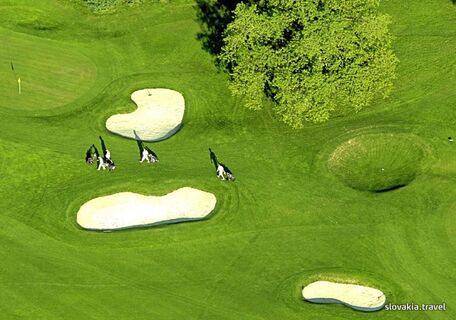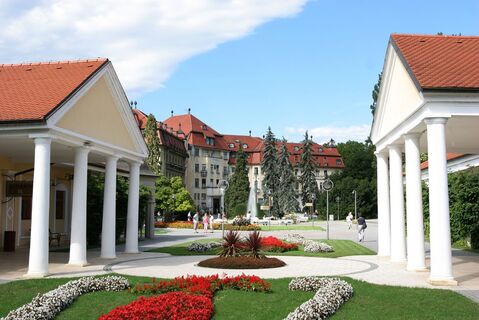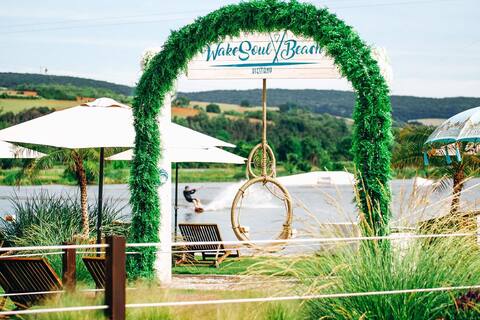Although the building called the Monastery, originally served as a Gothic church. It worked in the first third of the 19th century, but gradually began to decay. Damaged by flood and fire him, his fate finally sealed the construction of a new church. Stephen in the "old Piestany". People often monastery on the street Detvianska gradually dismantled and preserved from it only a torso. Whereas in the past worked as a land division today, with construction Kostolný cemetery extends into adjacent private area.
"During the archaeological excavations, we reviewed part of the base and more than 200 graves. We know that the cemetery is also on adjacent land, "said Director of Balneological Museum Vladimír Krupa.
Gothic church replaced its older predecessor, standing in the same place. "The older Romanesque church apparently ceased to meet today's inhabitants of Piestany, which then consisted of a number of settlements," said V. Krupa. And preserve the stories, chattering about the Templars. "They're really just legend, because at the time of construction of the church has canceled the Templars and in our territory or does not act," said museum director. Rumored also that well on land opposite the monastery is magical. Its healing effects help to eye diseases.
Early last century, bricks and stones from the monastery became building materials inhabitants of Piestany. From that time to preserve documents requesting local authorities to people neodnášali valuable part of the building. "Some of them were given to the National Museum in Budapest," she told V. Krupa recalling that at that time Slovakia formed part of the Austro-Hungarian Empire. Rare architectural parts of the monastery are in the capital of modern Hungary saved today. Copies have also exposed Piestany Museum.
In the same places it was buried centuries younger graves therefore often overlapped older. Part of the oldest remains of destroyed building of the new church. "Most of the skeletal remains we picked. Anthropologists from Nitra their processed and evaluated, something set aside as a sample. The presbytery of the church are buried the rest, does not serve for scientific or educational purposes. Are there, "said museum director.
Archaeologists fairly accurately determine the period of the birth of the historical monuments and artifacts found rare. How can this be determined? "They developed a typology of jewelry. These, along with the fashion changed and evolved, "said V. Krupa. Dead loved ones they accompanied the final journey to the grave, and they come to donate coins. "When the coin with the portrait of a monarch, we know when the Government. If the coin in his grave example of the 13th century, can not be over, "said the director. The hard part is to include simple objects, such as iron buckles. Their shape is not changed. All findings are cleaned and the registration card stored in the Balneological Museum. Several of them are exposed, remaining for lack of space left in the archives.
Why is not open to the public?
Spa Museum has previously proposed town of Piestany, to commemorate made available. Its disadvantage is the location and plans foundered mainly on finances. The current city leadership we attempt to restore confirmed, but in the words of Mayor's spokeswoman Eva Bereczová waiting for the call for drawing money from EU funds. If we have it, supposedly it was definitely involved. City, however, considering that the memory of the public make available at least through events.
Next year comes the memory of two-volume publication. Until then, you old monastery on the street Detvianska no. 9 marvel at least from a distance, through the green fence.





